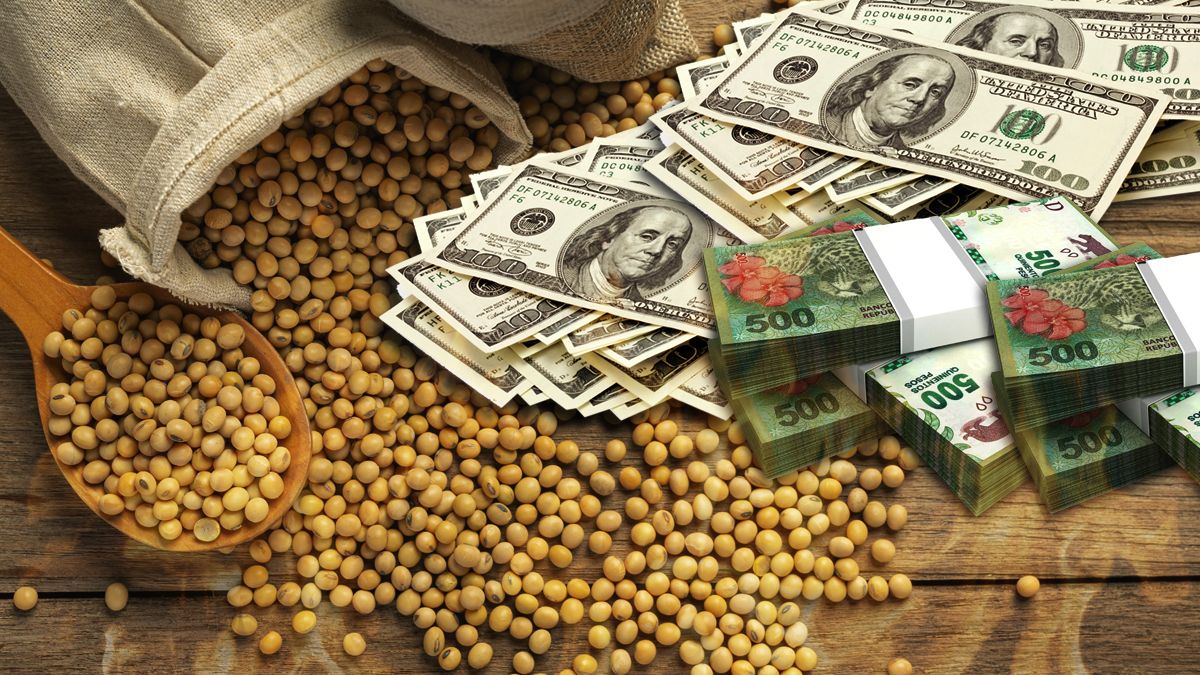The month would close below US$1.5 billion, which means the lowest figure for this period since 2008. Paralyzed sales hit exports hard in the first two months.
The foreign exchange settlement of agriculture accumulates so far in March barely US$900 million and, according to projectionstaking into account the affidavits of foreign sales (DJVE) of grains, the month would close below US$1.5 billion, which would mean the lowest income of dollars from the field for this period, at least since 2008. This scenario continues to generate even more pressure on the economy. In parallel, the possibility of the Government launching a new edition of the soybean dollar in the short term was cleared up, since producers are increasingly reluctant to sell the available merchandise.
The content you want to access is exclusive to subscribers.
Strictly speaking, according to the statistics of the Secretary of Agriculture of the Nation, around 7.6 million tons of soybeans remain to be sold from last season, while the current cycle advances marked by the deep drought that cut estimates for the harvest by below 30 million tons. This way, The available merchandise of the 2021/22 cycle represents, taking into account the current prices of the grain, some US$4,500 million, which would be very useful for the local economy, which is in need of fresh foreign currency. The truth is The economic team led by Sergio Massa has already flatly ruled out the possibility of resorting to the launch of a new differential exchange rate to encourage the inflow of foreign currency in the short term. It is that reality shows that producers who still have grain have enough financial back to not sell and take the oilseed as a refuge of value before the vicissitudes that the current campaign shows.


soybean dollar
In the market they also explain that a differential exchange rate would not end up attracting producers who still have grain either. It is that the increase in the gap between the official dollar and the parallels continue to generate even more noise in the sector, which also paralyzes any sales decision. Going forward, a slight rebound in the income of dollars from the field is expected, but for a logical reason, the soybean harvest will begin to enter, although the truth is that one of the leanest campaigns for soybeans and corn is also expected in the recent history of Argentina. And that is more than a problem going forward because it is already known that the liquidation of the field during this year would be well below US$30,000 million, far from the record last year when more than US$40 entered. 000 million between January and December.
Another key fact that is making itself felt in the economy is the sharp decline in exports of grains and by-products, due to lower grain sales and practically the paralysis of the field due to the drought that can still continue to generate production cuts. According to official statistics, in the first two months of the year, unprocessed grain exports accumulated around 4 million tons, while in the same period of the previous year it had been 9.9 million tons. In so far as by-products are concerned, 2.1 million tons have been exported so far this year, versus 3.7 million tons last year.
Also taking into account the lower availability of grain as a result of the drought and the very probable retention of soybeans from those producers who can do it (mostly the medium and small ones do not have sufficient financial support to execute it), in the oil industry They are already anticipating that a very difficult year is coming in which the sector’s exports will fall drastically and it will be more than necessary to import soybeans from neighboring countries to meet the demand of foreign buyers. In short, a complex combo that the local economy will still have to overcome.
Source: Ambito




